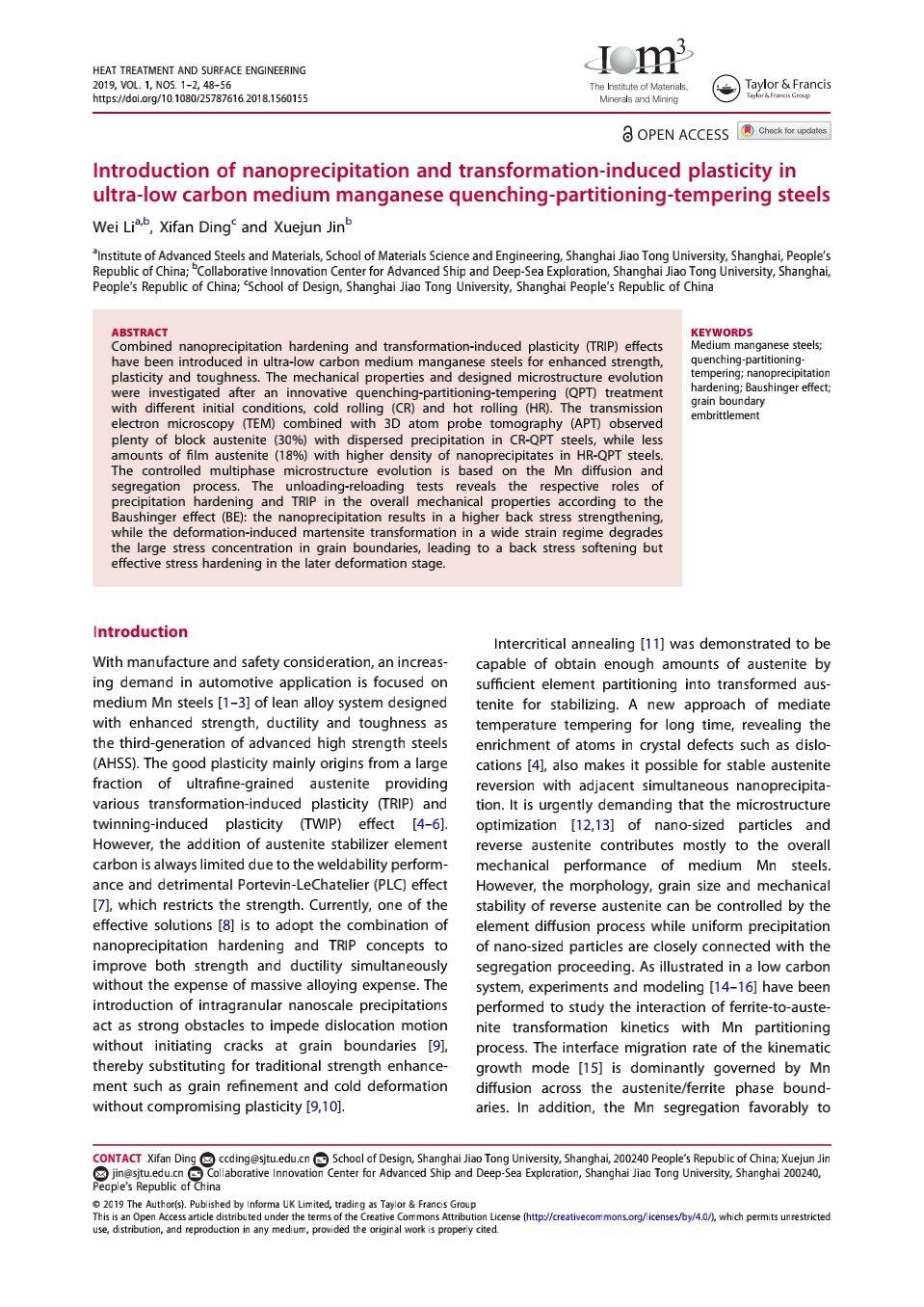Combined nanoprecipitation hardening and transformation-induced plasticity (TRIP) effects have been introduced in ultra-low carbon medium manganese steels for enhanced strength, plasticity and toughness. The mechanical properties and designed microstructure evolution were investigated after an innovative quenching-partitioning-tempering (QPT) treatment with different initial conditions, cold rolling (CR) and hot rolling (HR). The transmission electron microscopy (TEM) combined with 3D atom probe tomography (APT) observed plenty of block austenite (30%) with dispersed precipitation in CR-QPT steels, while less amounts of film austenite (18%) with higher density of nanoprecipitates in HR-QPT steels. The controlled multiphase microstructure evolution is based on the Mn diffusion and segregation process. The unloading-reloading tests reveals the respective roles of precipitation hardening and TRIP in the overall mechanical properties according to the Baushinger effect (BE): the nanoprecipitation results in a higher back stress strengthening, while the deformation-induced martensite transformation in a wide strain regime degrades the large stress concentration in grain boundaries, leading to a back stress softening but effective stress hardening in the later deformation stage.
